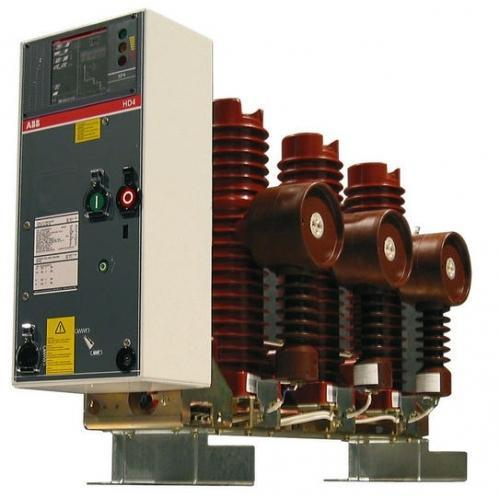
A circuit breaker in which the current carrying contacts work in the sulphur hexafluoride or SF6 gas is known as an SF6 circuit breaker. SF6 has magnificent insulating property. SF6 has high electro-negativity. That means it has high affinity to absorb free electron. when a free electron strike with the SF6 gas molecule, it is absorbed by that gas molecule & forms negative ion. The addition of the electron with the SF6 gas molecules may take place in two different ways, These negative ions clearly much heavier than a free electron & therefore over all flexibility of the charged particle in the SF6 gas is much less as compared with the other common gases. We know that the mobility of charged particle is majorly accountable for conducting current through a gas. Hence, for heavier & less mobile charged particles in SF6 gas, it gets very high dielectric strength.
Not only the gas has the good dielectric strength but also it has the unique property of fast rearrangement after the source energizing the spark is removed. The gas has also very good heat transfer capacity. Due to its low gaseous viscosity SF6 gas can efficiently transfer heat by convection. So due to its high dielectric strength & high cooling effect SF6 gas is around 100 times more successful arc quenching media than the air. Due to these special properties of this gas SF6 circuit breaker is used in complete range of medium voltage & high voltage electrical power system. These circuit breakers are available for the voltage varies from the 33KV to 800 KV & even more.
Disadvantages of SF6 CB
The SF6 gas is recognized as the greenhouse gas, safety regulation are being proposed in many countries in order to prevent its release into the atmosphere. Puffer type design of SF6 CB requires a high mechanical energy which is around 5 times greater than that of oil circuit breaker.
Types of SF6 Circuit Breaker
There are mainly 3 types of SF6 CB depending upon the voltage level of application-
1. Single interrupter SF6 CB used for up to 245 KV(220 KV) system.
2. Two interrupter SF6 CB used for up to 420 KV(400 KV) system.
3. Four interrupter SF6 CB used for up to 800 KV(715 KV) system.
Working of SF6 Circuit Breaker
The working of the SF6 CB of first generation was quite simple it is some extent related to the air blast circuit breaker. Here SF6 gas was compressed & stored in a high pressure reservoir. During operation of the SF6 circuit breaker this highly compressed gas is liberated through the arc in breaker & collected to relatively low pressure reservoir & then it is pumped back to the high pressure reservoir for reuse. The working of the SF6 circuit breaker is little bit different in modern time. Developments of the puffer type design makes operation of the SF6 CB much easier. In buffer type design, the arc energy is used to generate pressure in the arcing chamber for arc quenching.
Here the breaker is filled up with the SF6 gas at rated pressure. There are two fixed contact equipped with a specific contact gap. A sliding cylinder bridges these to fixed contacts. The cylinder can axially slide up & down along the contacts. There is one stationary piston inside the cylinder which is secured with the other stationary parts of the SF6 circuit breaker, in such a way that it can’t change its position during the movement of the cylinder. As the piston is secured & cylinder is movable or sliding, the internal volume of the cylinder varies when the cylinder slides.
During opening of the breaker the cylinder proceed downwards against the position of the fixed piston hence the volume inside the cylinder is decreased which generates compressed SF6 gas inside the cylinder. The cylinder has numbers of side vents which were restricted by the upper fixed contact body during closed position. As the cylinder proceed further in downwards direction, these vent openings cross the upper fixed contact, & become unblocked & then compressed SF6 gas inside the cylinder will come out from this vents in high speed towards the arc & passes from the axial hole of the both fixed contacts. The arc is quenched during this flow of the SF6 gas.
During the closing of the circuit breaker, the sliding cylinder proceeds up & as the position of piston remains at the fixed height, the volume of the cylinder increases which establish low pressure within the cylinder compared to the surrounding. Due to this pressure difference SF6 gas from the surrounding will try to enter in the cylinder. The higher pressure gas will come from the axial hole of both fixed contact & enters into cylinder through vent & during this flow; the gas will quench the arc.



